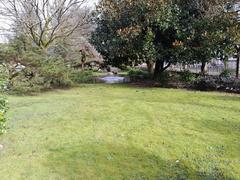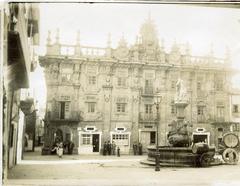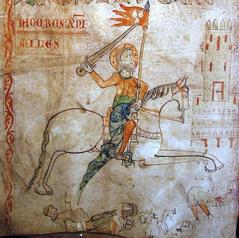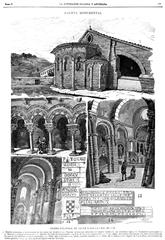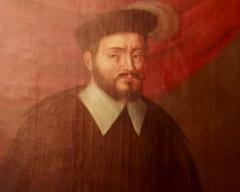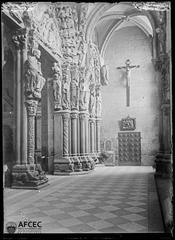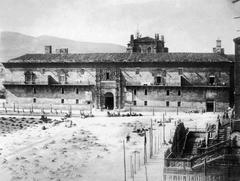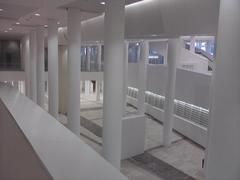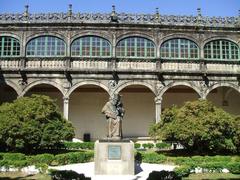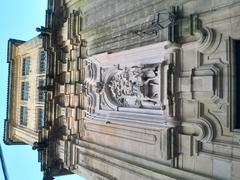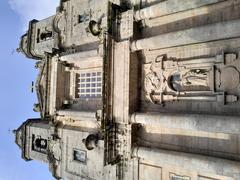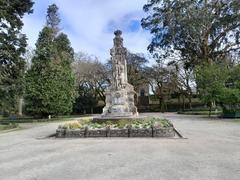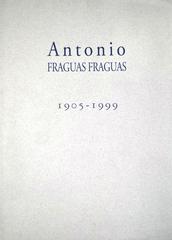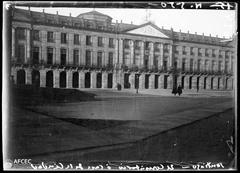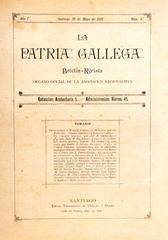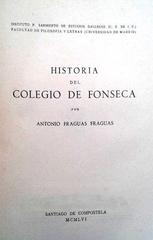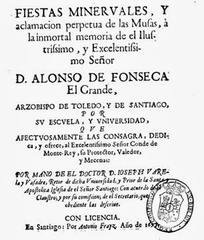As Dúas Marías of Santiago de Compostela: Visiting Hours, Tickets, and Historical Sites Guide
Date: 04/07/2025
Introduction
Nestled within the storied streets of Santiago de Compostela, the legacy of Maruxa and Coralia Fandiño Ricart—affectionately known as As Dúas Marías—remains a vibrant symbol of individuality, resilience, and subtle defiance. These two sisters, celebrated for their bold and colorful daily walks through the city during Francoist Spain, have become enduring icons of nonconformity and feminist courage. Their presence, immortalized in the lively polychrome sculpture in Parque de la Alameda, continues to inspire visitors and locals alike, serving as a focal point for both historical reflection and cultural celebration.
This comprehensive guide provides everything you need to know to experience the story of As Dúas Marías: from practical visitor information such as location, accessibility, and hours, to deeper insights into their historical significance and cultural legacy. Whether you are a history enthusiast, a champion of social justice, or simply a traveler seeking the heart of Santiago’s public spaces, this article will enrich your visit and connect you with the enduring spirit of these remarkable women. For further planning, consult resources from the Santiago de Compostela Tourist Office, Galicia Slow Travel, and other reputable guides (ilovecompostela.com; Evendo Guide).
Table of Contents
- Introduction
- Symbol of Resistance and Nonconformity
- Social Marginalization and Community Solidarity
- Feminist Iconography and Identity
- Urban Memory and Public Space
- Location and Accessibility
- Visiting Hours and Tickets
- Visitor Experience at Parque de la Alameda
- Cultural and Historical Significance
- Practical Visitor Tips
- Nearby Attractions and Services
- Safety and Etiquette
- Unique Experiences
- Legacy and Ongoing Significance
- Frequently Asked Questions (FAQ)
- Additional Resources and Links
- Summary and Call to Action
Symbol of Resistance and Nonconformity
During the repressive years of Francisco Franco’s dictatorship, Maruxa and Coralia Fandiño Ricart defied social norms by making flamboyant daily walks at 2:00 p.m. through Santiago de Compostela’s old town and Alameda Park. Their extravagant clothing, makeup, and lively demeanor stood in stark contrast to the somber, conservative environment of the era (galiciaslowtravel.com; es.wikipedia.org). Known locally as “As dúas en punto” (“the two o’clock women”), the sisters challenged rigid expectations regarding gender, age, and propriety, using their visibility as a quiet yet impactful act of resistance (ilovecompostela.com; gl.wikipedia.org).
Social Marginalization and Community Solidarity
The sisters’ notoriety was rooted in both personal hardship and broader political repression. Their family’s involvement in the anarcho-syndicalist CNT led to persecution, with siblings facing arrest, exile, and loss during the Spanish Civil War (ilovecompostela.com). Ostracized and subjected to institutional neglect, Maruxa and Coralia were often dismissed as “crazy” or “spinsters” (es.wikipedia.org). However, the local community quietly supported them, providing food and money—a testament to Santiago’s complex social fabric and the underlying solidarity among its residents (galiciaslowtravel.com).
Feminist Iconography and Identity
Over the years, As Dúas Marías have become powerful feminist icons. Their independence, refusal to marry, and expressive self-presentation have fostered academic research and inspired cultural tributes, such as Lois Pimentel Iglesias’s song “As dúas en punto (a hora da rebeldía)” (gl.wikipedia.org). Each International Women’s Day, locals gather at their statue, leaving flowers and messages, affirming their place in the ongoing conversation about women’s rights and visibility (explorial.com).
Urban Memory and Public Space
The sculpture of As Dúas Marías, created by César Lombera in 1994, stands in the heart of Parque de la Alameda. Its vivid colors and expressive poses capture the sisters’ spirit, restoring their presence in the city and affirming their role in Santiago’s urban folklore (es.wikipedia.org; padmapress.org).
Location and Accessibility
Location:
Parque de la Alameda, Santiago de Compostela—a five-minute walk from the Cathedral and city center.
How to Get There:
From the Cathedral, follow Rúa do Vilar east, turn onto Rúa do Franco, pass Plaza de la Quintana, and follow signs to the park. The statue is located along Paseo Central da Alameda (Evendo Guide). Buses 6 and 7 stop nearby, and taxis are readily available.
Accessibility:
The park features flat, paved pathways suitable for wheelchairs and strollers. Assistance services can be arranged via the local tourist office.
Visiting Hours and Tickets
- Park Hours: Open daily, typically from 7:00 AM to 10:00 PM (Evendo Guide).
- Statue Access: Outdoor, accessible 24/7.
- Entry Fee: Free—no tickets required.
Visitor Experience at Parque de la Alameda
Atmosphere and Setting
Parque de la Alameda provides a tranquil escape with mature trees, expansive lawns, and panoramic views of the city and Cathedral (Lonely Planet). The area around the statue is a favorite photography spot, especially at sunset.
Activities and Leisure
Enjoy walking, jogging, or relaxing on benches. The park is popular with locals and visitors alike, especially on weekends and holidays.
Guided Tours and Special Events
Many city walking tours include As Dúas Marías as a highlight, offering historical context and cultural insights. The park occasionally hosts cultural events and exhibitions—check the tourism website for updates.
Best Times to Visit
Late afternoon and early evening provide the best lighting for photos and the most vibrant atmosphere. Early mornings offer a quieter, contemplative experience.
Cultural and Historical Significance
The sisters’ story is a lens through which to view Santiago’s complex history: a tale of defiance, creativity, and the quest for visibility during a time of repression. Their transformation from marginalized figures to beloved icons is emblematic of the city’s evolving identity and commitment to honoring diversity (Culture Trip).
Practical Visitor Tips
- No Tickets Needed: Entry to the park and statue is free.
- Photography: Capture the statue and cityscape, especially during the golden hour.
- Weather: Santiago has a temperate climate with frequent rain—bring appropriate gear.
- Comfort: Wear comfortable shoes for exploring the park and nearby historic sites.
Nearby Attractions and Services
- Cathedral of Santiago de Compostela: UNESCO World Heritage site, a short walk away.
- Museo do Pobo Galego: Insight into Galician culture and social history.
- Ciudad de la Cultura de Galicia: Modern cultural complex.
- Dining: Numerous cafes and restaurants on Rúa do Franco and Rúa do Vilar.
- Accommodation: Central hotels and guesthouses within walking distance.
Safety and Etiquette
The park is well-patrolled and family-friendly. Please respect the sculpture by not climbing on it and dispose of litter responsibly.
Unique Experiences
- Sunset Views: Enjoy breathtaking evening vistas of the Cathedral and city skyline.
- Artistic Inspiration: The park is a gathering place for artists—bring your sketchbook or camera.
- Local Interaction: Engage with residents, especially during community events or commemorations.
Legacy and Ongoing Significance
The impact of As Dúas Marías extends far beyond the statue. Their story is preserved through documentaries, academic studies, artistic tributes, and annual commemorations. Their graves in Boisaca cemetery are now a site of homage, and their likeness appears on souvenirs and public art throughout Santiago (followthecamino.com; explorial.com).
Frequently Asked Questions (FAQ)
Q: What are the visiting hours for As Dúas Marías?
A: The statue in Parque de la Alameda is accessible 24/7. The park is open daily, generally from 7:00 AM to 10:00 PM.
Q: Is there an entry fee?
A: No, the park and statue are free to visit.
Q: Is the site wheelchair accessible?
A: Yes, with paved paths and assistance services available.
Q: Are there guided tours?
A: Many local operators include the park and statue in walking tours.
Q: What are the best times to visit?
A: Daytime for photography; late afternoon and sunset for ambiance.
Additional Resources and Links
- Santiago de Compostela Tourist Office
- Museo do Pobo Galego Official Site
- Cathedral of Santiago de Compostela
- Galicia Slow Travel: Las Dos Marías, Santiago
- Las Dos Marías on Wikipedia
- As dúas Marías (Galician)
- Explorial: Santiago de Compostela As Dúas Marías
- Follow the Camino: Santiago’s Two Marias
- Padmapress: Tale of the Two Marías
- Lonely Planet: Parque da Alameda
- Culture Trip: Santiago de Compostela Guide
Summary and Call to Action
The story of As Dúas Marías is a testament to courage, creativity, and the enduring quest for self-expression. Their vibrant legacy, immortalized in public art and collective memory, enriches any visit to Santiago de Compostela. Whether you come for history, art, or the simple joy of discovery, make time to reflect at their statue in Parque de la Alameda—a landmark that continues to inspire and unite.
Plan your visit today by consulting the Santiago de Compostela Tourist Office, exploring local tours, or downloading the Audiala app for immersive guides and up-to-date events. Share your experience with #AsDúasMaríasSantiago and become part of a living tradition that celebrates resilience and individuality.
